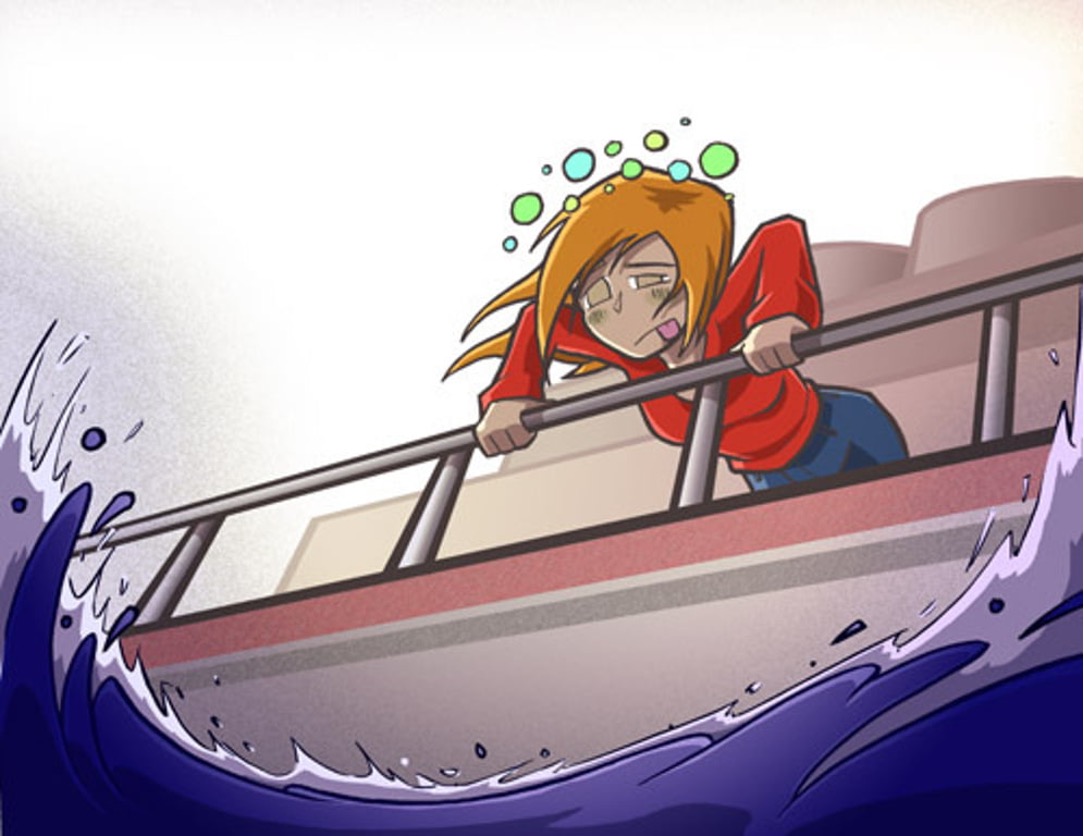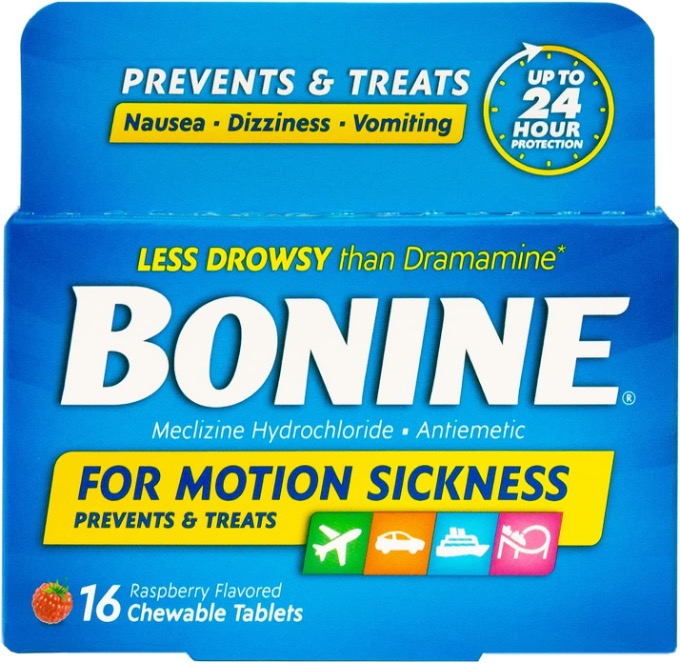Here are some tips on how to avoid/minimize seasickness on your next cruise.

Will you get seasick if you go on a cruise? Even if you are not prone to mal-de-mer, storms and rough waters can bring on those unpleasant queasy feelings. And even if you can’t avoid seasickness during your sailing, you can at least be ready to minimize its ill effects.
Here are some tips on how to prevent seasickness on a cruise, along with advice on how to keep your stomach from flip-flopping should the waves start rocking and rolling.
What are the symptoms of seasickness?
Seasickness, mal-de-mer, motion sickness: It’s all the same thing—that funny feeling in your stomach and dizziness in your head that can sometimes become nausea when you’re traveling by car, plane, train, bus, or boat.
When you’re on a cruise, seasickness can range from just feeling a bit “off” to feeling sick to your stomach to actual vomiting. You may also feel as though you’ve lost your sense of balance or stumble a bit as you walk around the ship.
What causes seasickness?
Motion sickness, in general, is caused by conflicting signals that are sent to the brain by the eyes, ears, and the neuromuscular system. Our eyes and ears (the vestibular system) sense motion while our neuromuscular system senses stillness. When these signal systems send conflicting information to the brain, it can cause the symptoms of dizziness, nausea, irritability, fatigue, sweating, and inability to concentrate.
This can happen not only while you are on a ship, but also in a car, plane, or train, or even playing VR and/or video games.
We get seasick when our sense of motion and balance get out of sync. When your ship starts sailing, it will transfer motion to you. If you’re inside and away from a window, you do not see the motion, but you’re feeling it. This creates a dissonance that can be problematic for your body.
Who’s at risk to suffer from seasickness?
Some people are more prone to seasickness than others, and doctors can’t explain why. But they do know children ages 2 to 12 are more apt to suffer from the illness, as are pregnant women.
How can you prevent and treat seasickness?
Here are seven tips that may help:
- Spend time on deck as the ship gets underway.
Once your cruise ship has set sail from its embarkation port, you might feel compelled to go explore the ship or relax in your room. Resist the urge; instead, spend some time on an open deck, watching the horizon.
This helps your eyes, body, and brain a chance to “sync up.” As you feel the ship moving through the water, and see the horizon bob in the distance, your brain can “reprogram” its sense of balance and normalcy. Just be sure to sit parallel to the horizon or face the same direction as the ship’s movement. You don’t want to face the opposite direction, as that can confuse your sensory inputs.
If you are somewhere inside the ship and start feeling sick at any point during the voyage, head to an open deck for some fresh air. Once there, train your eyes on the horizon. It will give your brain a chance to correctly interpret the signals it’s receiving from all your senses.
- Pick a big ship.
How much you feel the ocean’s movement will depend on the type and size of ship you’re on. The smaller the ship, the more movement you’ll feel. So to minimize the risk of seasickness, book one of the larger ships.
- Pick the right cabin.
If you’re worried about seasickness, pick a cabin that’s as close to the water level as possible and in the center of the ship. You’ll be at the ship’s fulcrum point, which means you’ll feel less movement than people on higher decks with cabins far forward or at the rear.
Spring for a room with a view of the water or with outdoor space, so you can easily keep an eye on the horizon and have quick access to fresh air.
- Select the right itinerary.
If you think you’ll be plagued by seasickness, pick an itinerary with more time spent in port and fewer days spent entirely at sea.
Also, consider a voyage that sails calm waters. For example, the Seattle/Vancouver-Alaska route is known for smooth sailing most of the time; one-way itineraries that cross the Gulf of Alaska can be rockier. River cruises offer slow travel without swells and with frequent port stops.
Avoid cruise regions with a reputation for rockiness, such as the Pacific Ocean or the Drake Passage between South America and Antarctica.
- Eat and drink the right things.
On embarkation day, it’s smart to eat balanced meals and avoid anything greasy or acidic. Also, you may want to pass on alcohol; anything that causes dehydration can be a trigger for seasickness.
Don’t skip meals altogether, though. It’s important to have food in your stomach at the beginning of your cruise. Carbonated beverages with a light meal can help with feelings of nausea.
After the first day at sea, you should be able to resume your normal eating and drinking habits.
- Natural remedies may work.
While natural remedies can’t treat all symptoms of seasickness, there is anecdotal evidence lemon, green apple, ginger, and peppermint are good at alleviating nausea.
You may want to consider packing peppermint tea and ginger chews. Many cruise ship main dining rooms set out a bowl of ginger in the reception area.
You may also want to try acupressure wristbands. These are wristbands that apply directed pressure to a particular point on the inside of your wrist that is said to reduce nausea.
Finally, don’t rule out shut-eye as a cure-all; sleep is beneficial for helping with vertigo and dizziness.
- Bring medication.
If all of the precautions above don’t prevent/alleviate your seasickness symptoms, it may be time to consider medication.
Speak with your doctor and get any prescription filled before you depart. Dramamine (dimenhydrinate, an antiemetic) and scopolamine (a patch that you affix behind your ear for up to three days) are two options.

You may also want to think about bringing OTC antihistamines, too. Not all antihistamines reduce the symptoms of motion sickness, so be sure to talk with your doctor about the best option. Many cruisers pack over-the-counter Bonine, which is a brand name for the antihistamine meclizine. The key is to take the first pill about an hour before the ship starts moving. Note that side effects can include dry mouth and drowsiness.
If you get very sick, make an appointment with the ship’s doctor, who may prescribe any of the above drugs or promethazine (a combined antihistamine and antiemetic) or ephedrine.
Twist’s Take: If you are concerned about seasickness, consider these tips on prevention and alleviation.

